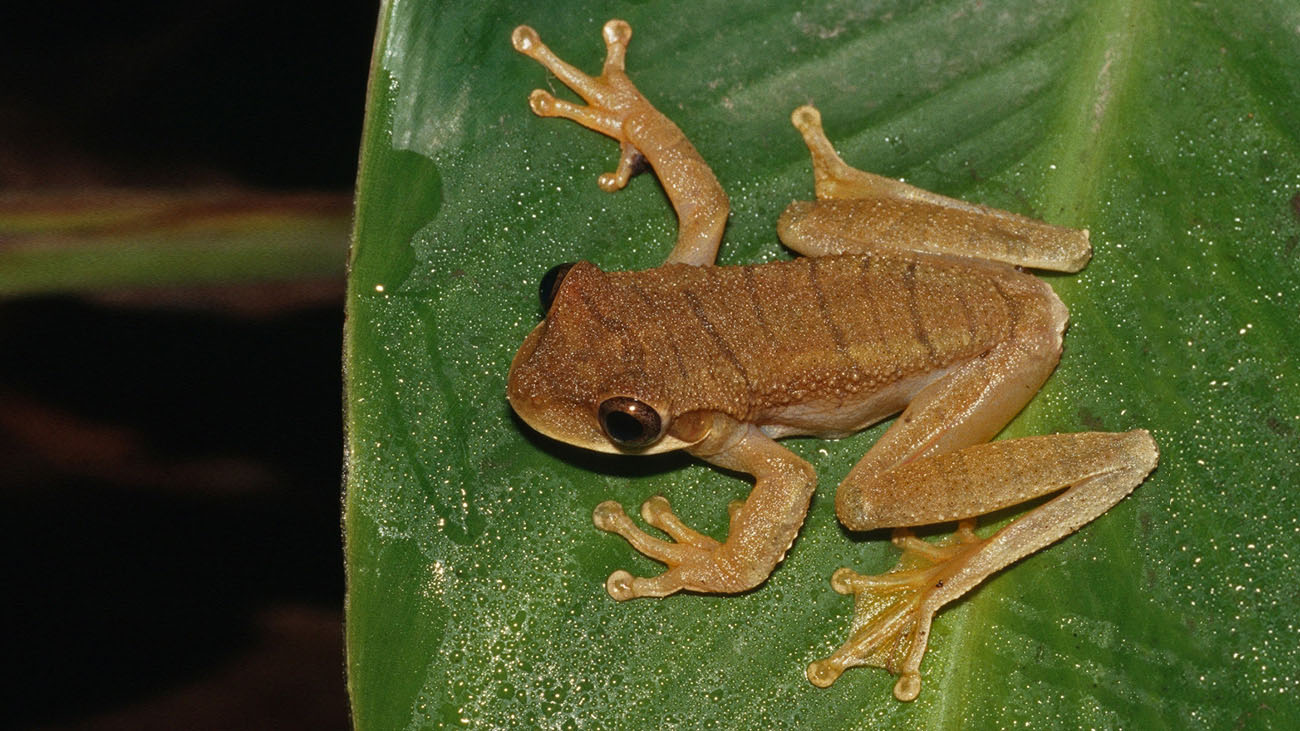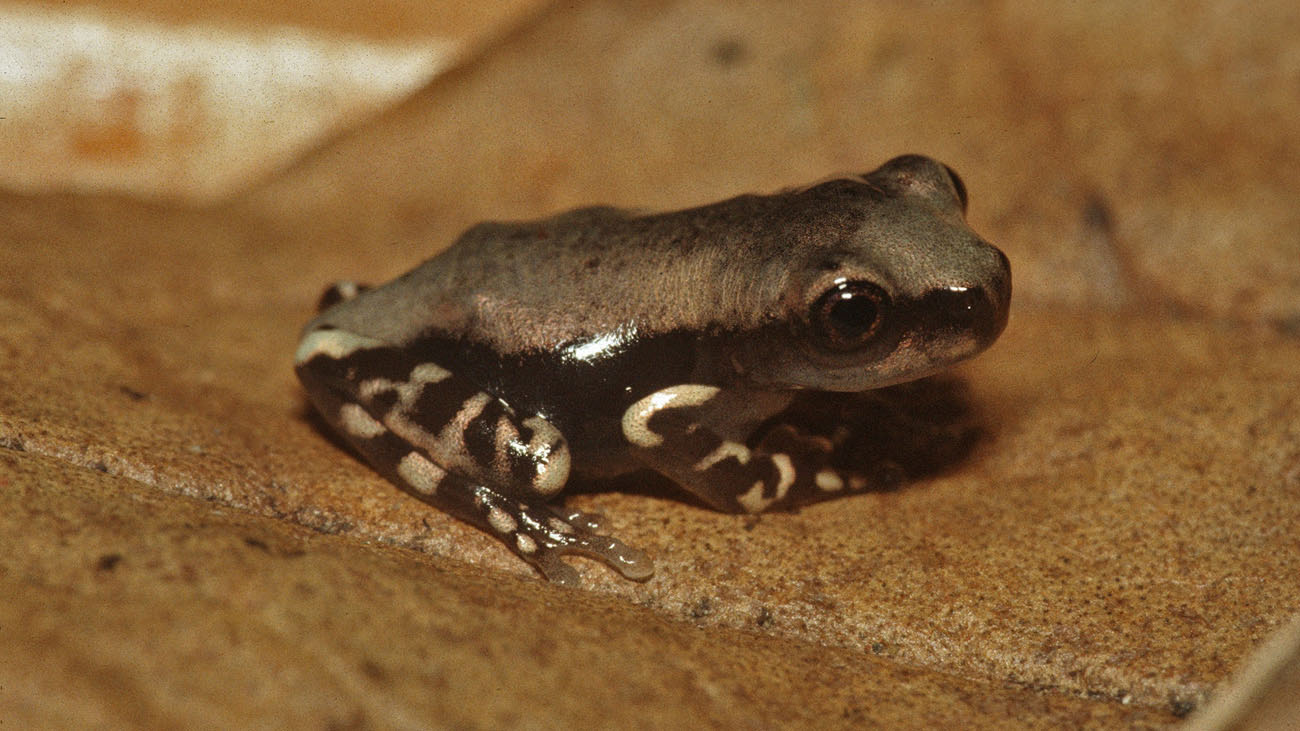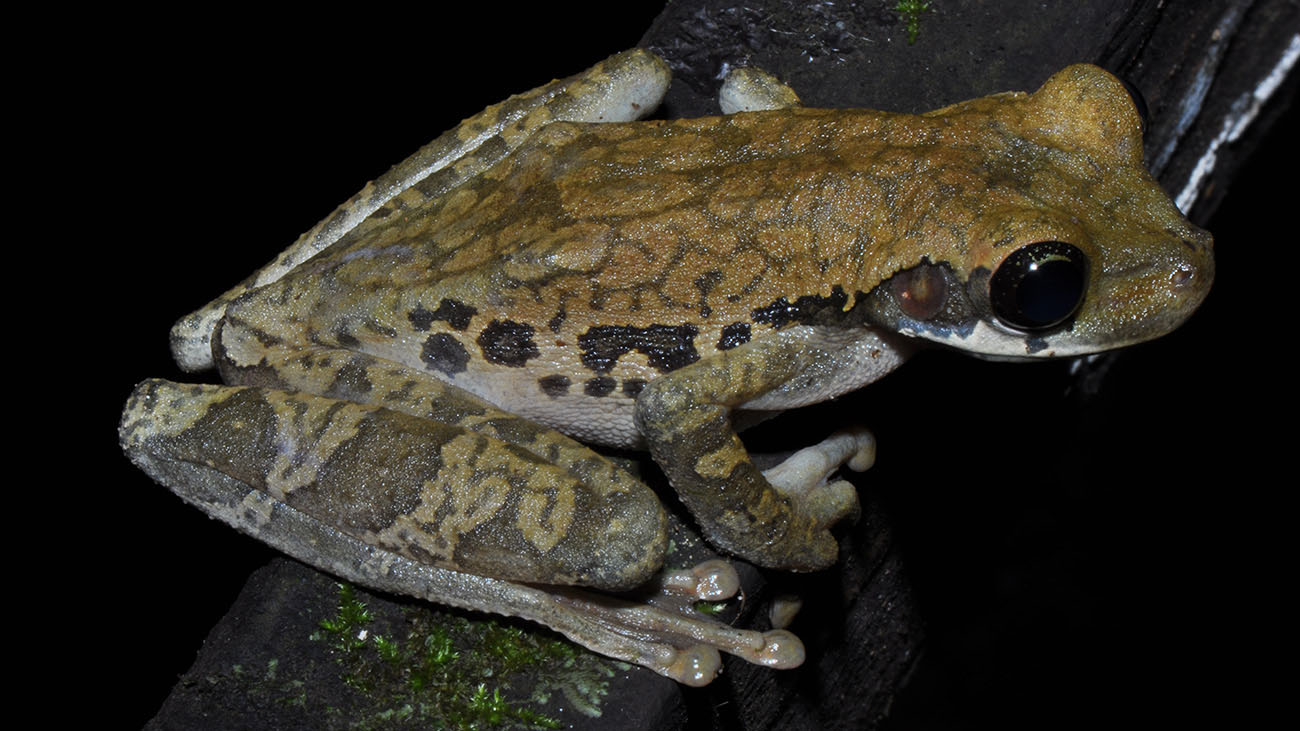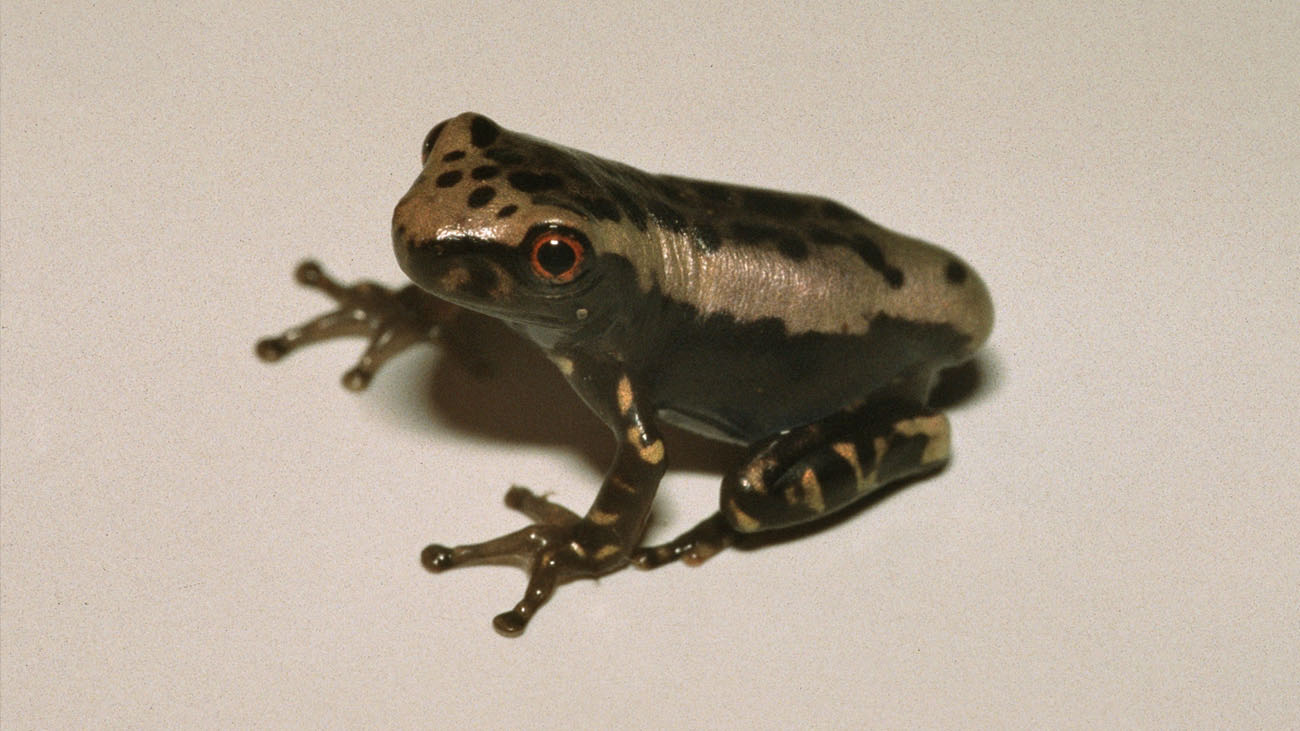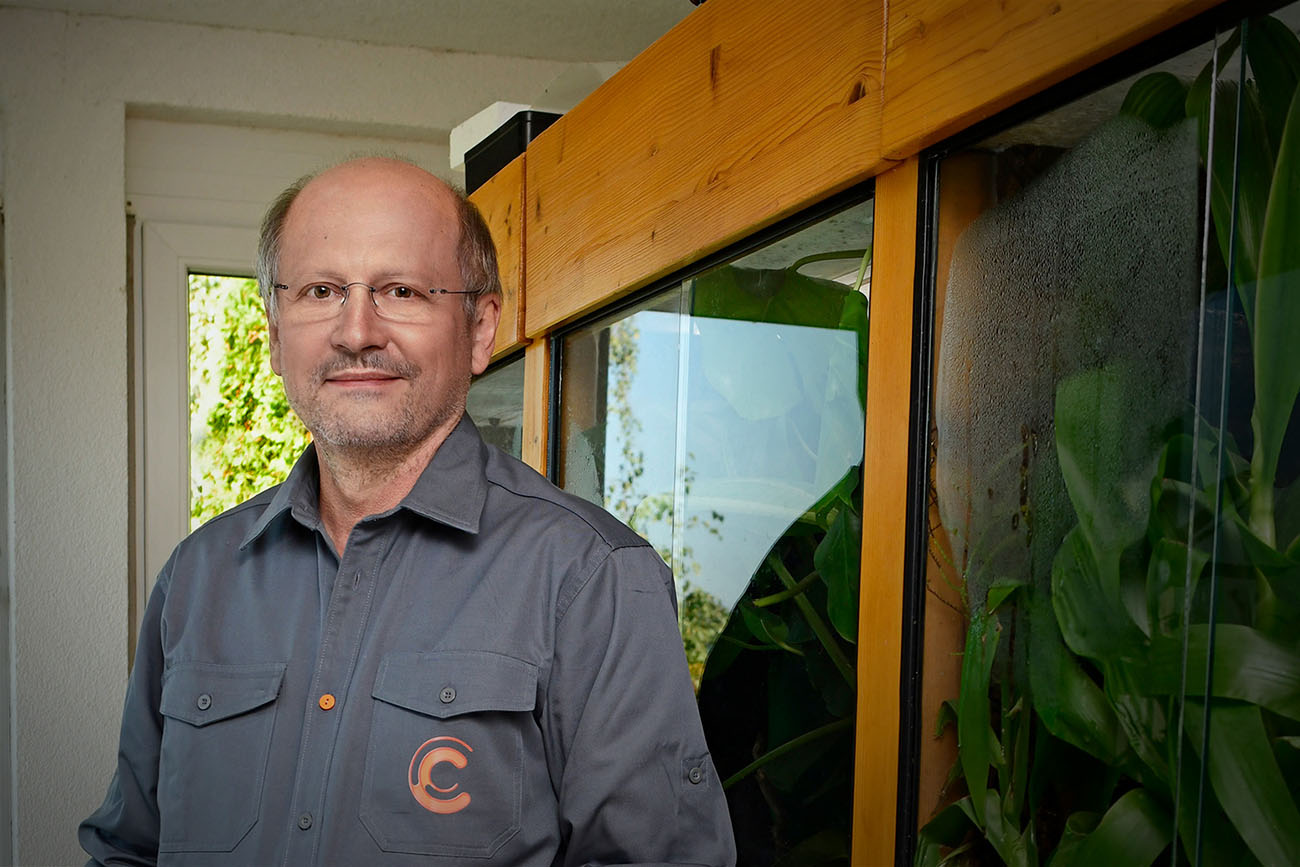
Serious, not crazy
Should private citizens breed wild animals? Anyone who reads Karl-Heinz Jungfer’s story no longer asks that question. Instead, a different one springs to mind: How can we convince more people to get involved in breeding wild animals?
“Crazy about frogs.” The title of the article that caught the eye of 12-year-old Karl-Heinz in an aquarium magazine now seems prophetic. He’d already been keeping reptiles for three years, he says, but the article introduced him to a new world. In the four decades since, his life has been filled – and fulfilled – with frogs. Some people might call him obsessed, even crazy – but the biology teacher is serious about his favorite subject. He’s especially fascinated by the amazing variety of strategies frogs use to successfully reproduce.
Diversity in family planning
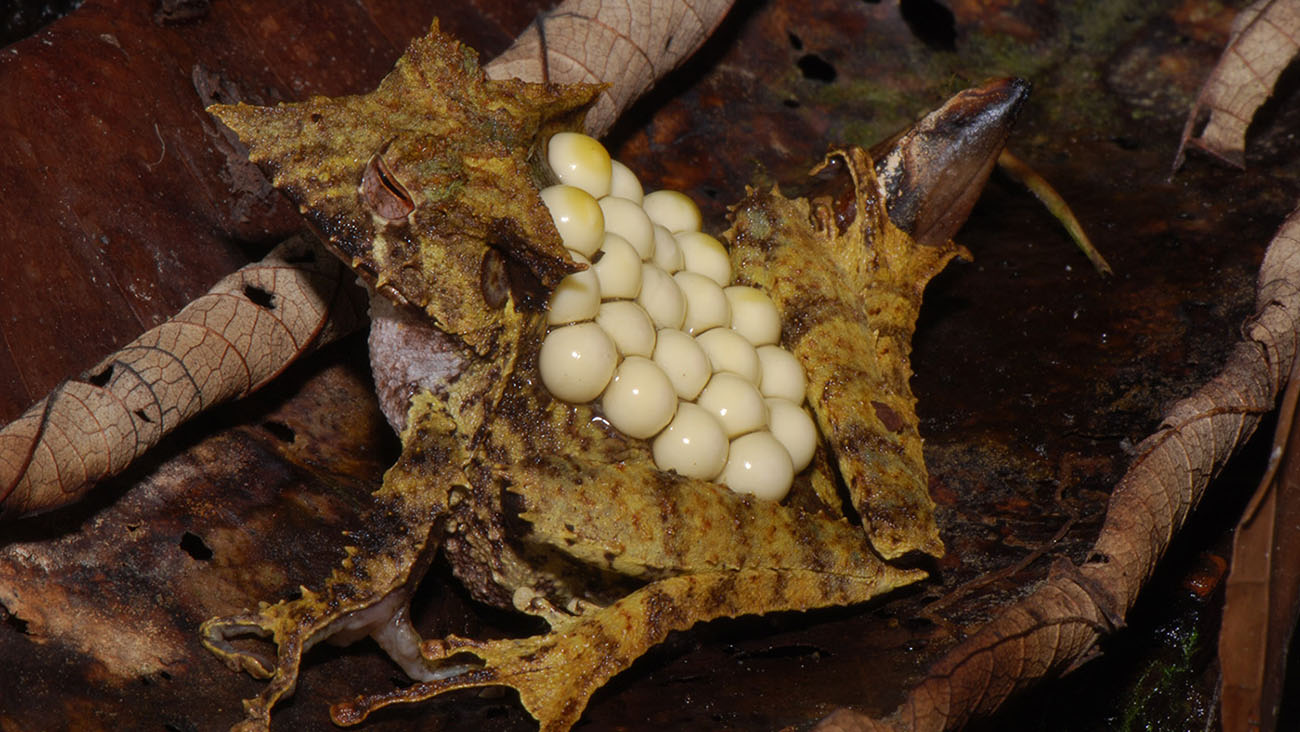
Karl-Heinz has intensively studied the diversity of reproduction strategies in his frogs – and has observed amazing things. The frog (Hemiphractus proboscideus) carries its eggs on its back for two months. Then they hatch into small frogs. | Karl-Heinz Jungfer
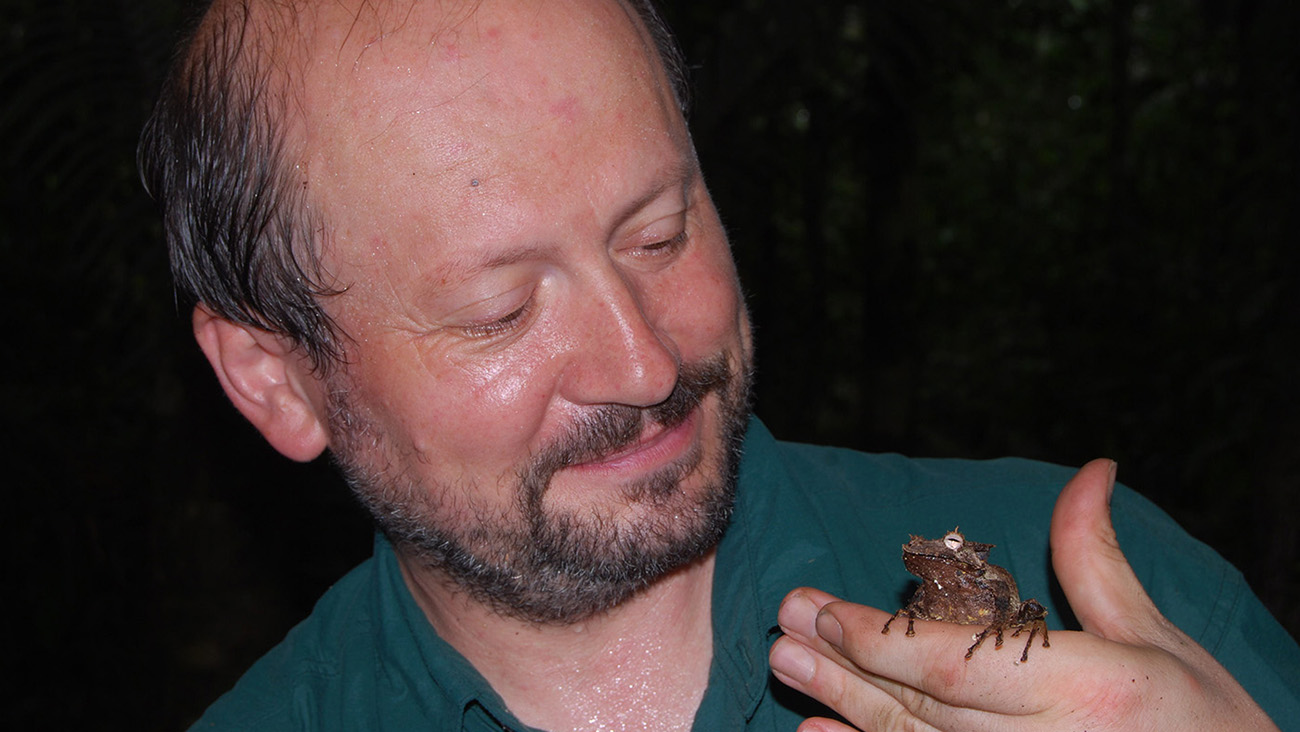
Such research findings are the product of years of hard work, made even more challenging because the frogs live in treetops and are not easy to find. Sometimes it takes years – and multiple trips – before Karl-Heinz manages to catch a second specimen. | Karl-Heinz Jungfer
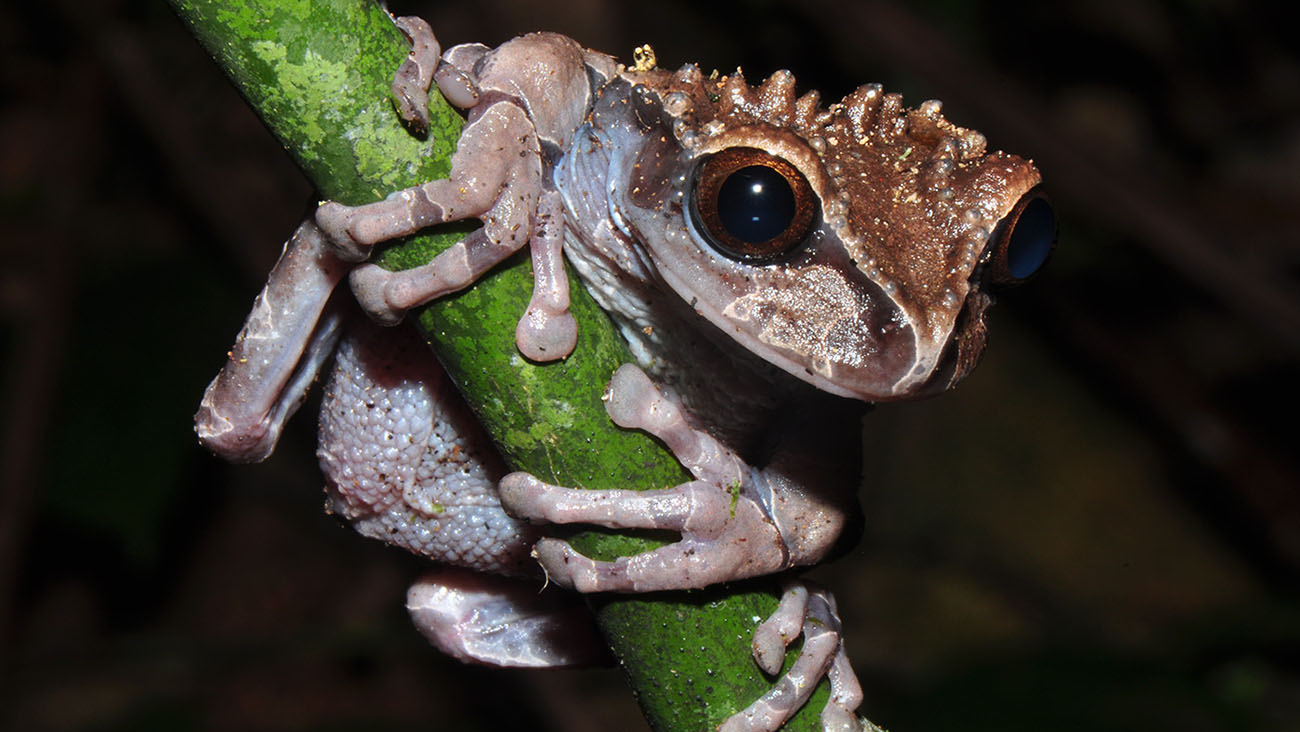
The Spiny-headed tree frog (Triprion spinosus) has an amazing reproductive strategy that was only became clear through Karl-Heinz’s terrarium observations. When researchers found the first tadpoles…
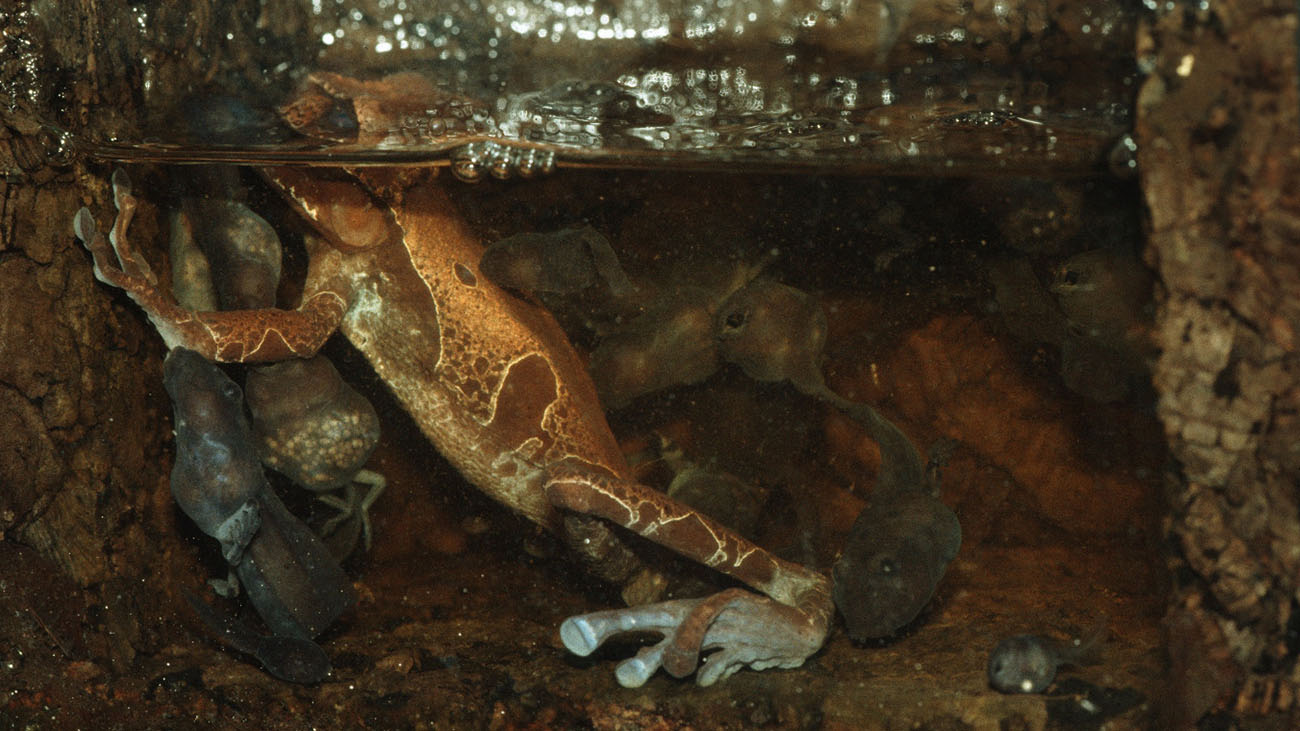
… in nature, they were surprised to see eggs through their skin. They thought the tadpoles had formed these eggs and could reproduce in the larval stage, similar to the Axolotl. In reality…
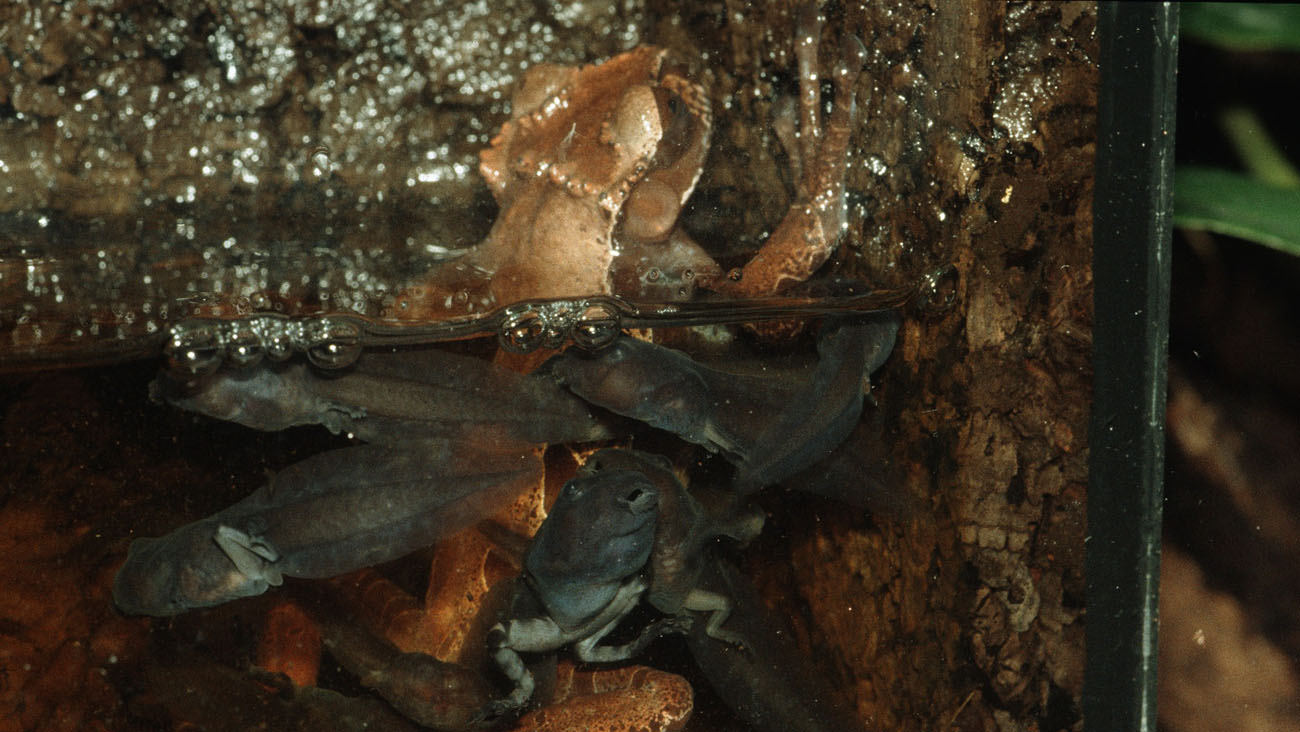
… the mother feeds the tadpoles with unfertilized eggs, which Karl-Heinz discovered in his terrarium. He was even able to document the tadpoles’ begging for their food. | Karl-Heinz Jungfer
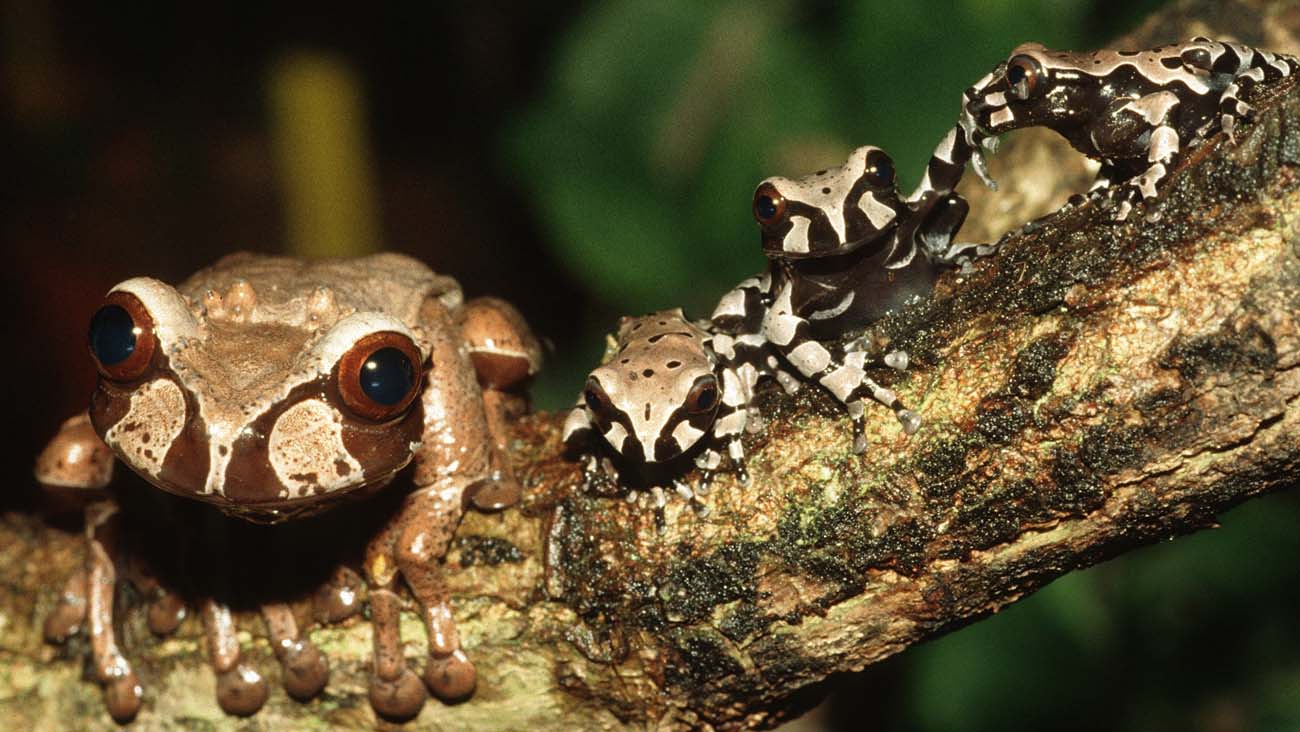
Female Spiny-headed tree frogs with their newly metamorphosed young. | Karl-Heinz Jungfer
A life dedicated to frogs
Twenty-nine years ago, on his first trip to Latin America, he found three species that had never been described by scientists. Since then, he has made frog research his hobby, and as a private scholar he has described several new species and published multiple scientific papers. And “at least once a year I need to breathe rainforest air,” he says. In 1992 he spent nine months in Brazil so that he could observe how the tree frog Osteocephalus mutabor cares for its young. Luckily for him, he also has other hobbies: like long-distance running. This ensures he has plenty of endurance for long jungle hikes.
Karl-Heinz' discoveries
By observing the frogs in the terrarium, Karl-Heinz also discovered what the Osteocephalus verruciger tree frog young look like. This is a couple before depositing their eggs… … and a freshly metamorphosed frog. By observing the frogs in the terrarium, Karl-Heinz also discovered what the Osteocephalus verruciger tree frog young look like.
In the crosshairs of gold miners
Even at home in the Swabian village Gaildorf, Karl-Heinz is surrounded by frogs. “Of course, they’re much easier to observe in a terrarium than in Amazonian treetops.” That is why he still has big plans for his terrarium room. Here, he will breed the Demonic Poison Frog for Citizen Conservation.
This small poison dart frog lives only on a single mountain plateau in Venezuela. It is extremely vulnerable, both because of the political instability in the country and because of gold deposits in the mountain. The fragile habitat of the frog is in danger of being destroyed by gold mining operations—not known for their environmental sensitivity.
Unique in evolution
That would be a tragic loss. The frog “is truly unique, the only example of its genus, and an unusual strand in the evolution of poison dart frogs,” with largely unknown reproductive habits. Karl-Heinz would like to discover the frog’s reproductive secrets—and help make it possible to raise the frog in captivity. “Citizen Conservation is the perfect chance to show that private citizens can play a role in the protection and preservation of species they care about. I want to contribute to that!”
